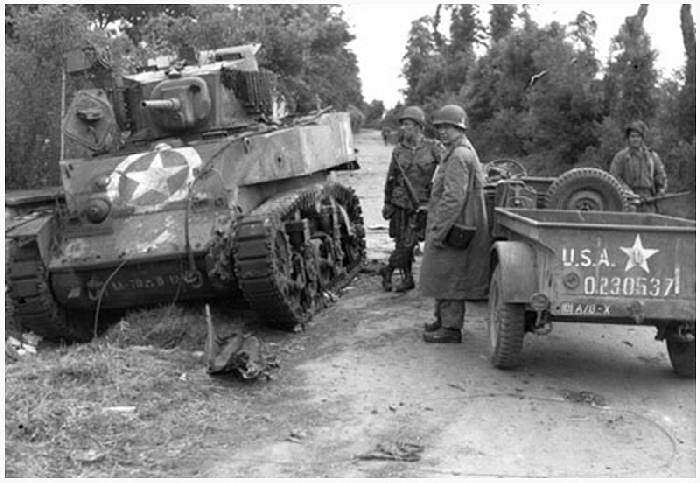Dead Man’s Corner: The 101st Airborne and the Battle for Carentan After D-Day

One of the most crucial routes off Utah Beach was the narrow road known as Causeway #2, leading inland through Sainte-Marie-du-Mont, Verville, and Saint-Côme-du-Mont, and finally into the strategic town of Carentan. Control of Carentan would unite the Utah and Omaha sectors, allowing for continuous movement of men and supplies.
At the junction of the roads from Sainte-Marie-du-Mont and Saint-Côme-du-Mont, a now-famous location earned its chilling name: Dead Man’s Corner.
The German “Green Devils” Defend Carentan
The area surrounding Carentan was held by the German 6th Fallschirmjäger Regiment, elite paratroopers known as the “Green Devils.” Under the command of Major Friedrich August von der Heydte, the regiment was well-entrenched and fiercely determined to hold its ground.
Interestingly, von der Heydte was a cousin of Colonel Claus von Stauffenberg, the man who later attempted to assassinate Adolf Hitler on July 20, 1944, in the failed Operation Valkyrie.
In the fields and hedgerows of Normandy, fate pitted these seasoned German paratroopers against their American counterparts — the “Screaming Eagles” of the 101st Airborne Division.
June 7, 1944: Clash at the Crossroads
On June 7, the day after D-Day, paratroopers of the 101st Airborne linked up with a platoon of six M4 Sherman tanksand several M5 Stuart light tanks. Together, they began advancing toward Carentan under intense German resistance hidden among the dense hedgerows.
As the column approached a key crossroads dominated by a large red-and-white building — which served as the headquarters and aid station for the German 6th Fallschirmjäger — disaster struck.
The lead M5 Stuart tank was hit by a Panzerfaust, a handheld German anti-tank weapon, fired by Bruno Hinz. The projectile penetrated the tank, killing its commander, 1st Lt. Walter T. Anderson. His body was left hanging halfway out of the turret — a haunting image that would give the crossroads its name.
The Origin of “Dead Man’s Corner”

The wrecked Stuart, with Lt. Anderson’s body still visible, was pushed to the side of the road to clear the way for the advance toward Carentan.
Because the Germans had removed all road signs in Normandy to confuse the invading troops, there were no markers pointing toward Carentan at this intersection. Soldiers began using the tank as a reference point, telling others to continue past “the corner with the tank and the dead man in it.”
Over time, that phrase was shortened — and Dead Man’s Corner entered the lexicon of World War II history.
Debate Among WWII Historians
While this is the most well-known version of the story, historians still debate certain details.
Mark Bando, a respected historian specializing in the 101st Airborne, argues that it may not have been the tank commander who died, but the driver — and that the body may have remained inside the vehicle, only visible to those who peered closely into the hatch.
Two known wartime photographs of the destroyed Stuart tank show no visible remains, leaving the exact circumstances shrouded in mystery. Nonetheless, the tragic incident — and the soldiers’ enduring nickname for the site — have become part of D-Day legend.
Dead Man’s Corner Today
Today, the site of that crossroads has become one of Normandy’s most visited D-Day landmarks. The building once used as the German headquarters now houses the Dead Man’s Corner Museum, part of the larger D-Day Experience complex.
Visitors can explore:
-
A C-47 flight simulator recreating the 101st Airborne’s jump into Normandy.
-
A detailed paratrooper museum documenting the battle for Carentan and the actions of both the American and German airborne forces.
-
Authentic artifacts belonging to Major Richard “Dick” Winters and other members of Easy Company, immortalized in Band of Brothers.
Standing at Dead Man’s Corner today, visitors can sense the weight of history — a crossroads that saw courage, sacrifice, and the birth of a legend.
The story of Dead Man’s Corner blends history and myth, capturing the brutal reality of the Normandy campaign. Whether the legend unfolded exactly as told or not, the crossroads near Carentan remains a powerful reminder of the cost of liberation and the valor of the men of the 101st Airborne.
For anyone visiting Normandy, a stop at Dead Man’s Corner offers a tangible connection to the heroes who fought and fell to free Europe.
